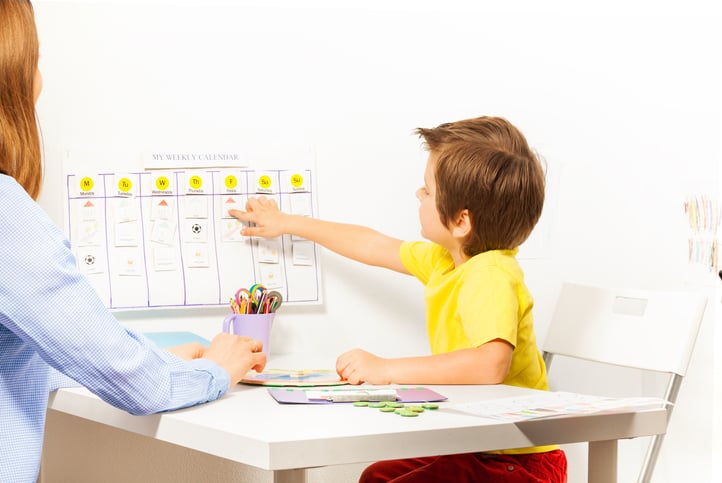Environmental Factors: Crafting Supportive Learning Spaces
This article is the fourth in our series on Key Root Causes of Disruptive Classroom Behaviors and How to Help
The physical and structural environment of a classroom plays a crucial role in influencing student behavior. Environmental factors such as classroom layout, structure, and transitions between activities can significantly impact how students engage with their learning environment and interact with their peers. By carefully designing these elements, teachers can create a setting that not only supports learning but also minimizes disruptive behaviors.
Structuring the Classroom Environment for Positive Student Behavior
The layout of a classroom is often the first aspect of the environment that affects student behavior. A well-organized, clutter-free space can help reduce distractions and make it easier for students to focus on their tasks. For example, clearly defined areas for different activities—such as a reading corner, a space for group work, and individual desks—can help students understand the expectations for each space. Ensuring that pathways between these areas are clear and unobstructed can also prevent unnecessary movement and potential conflicts, contributing to a more orderly classroom environment.
Structuring the Physical Layout and Classroom Routines
Classroom structure extends beyond physical layout to include the routines and systems that govern how the classroom operates. Consistent routines provide students with a sense of security and predictability, which is particularly important for those with special education needs. When students know what to expect and what is expected of them, they are less likely to feel anxious or overwhelmed, reducing the likelihood of disruptive behaviors. For example, a daily schedule displayed prominently in the classroom can help students anticipate upcoming activities and transitions, making them feel more in control of their environment.
Transitions between activities are a critical aspect of classroom structure that can either contribute to or mitigate disruptive behaviors. Transitions can be challenging for many students, particularly those who struggle with change or have difficulty shifting their focus from one task to another. Without clear guidance and support, these moments can lead to confusion, frustration, and ultimately, disruptive behavior.
Using a curriculum with structured lessons to help develop skills like transitioning between activities, and participating in everyday classroom routines can be helpful. One option is the Language Builder: Academic Readiness Intervention System (ARIS), which includes functional routines lessons that are particularly effective in helping students participate smoothly in classroom life. These lessons focus on teaching students how to engage in classroom routines and how to transition from one activity to another with minimal disruption. For example, ARIS includes lessons on arrivals and circle time as well as on moving from one activity to another, emphasizing the steps involved and the expected behavior during this transition. By breaking down the transition into manageable parts and providing explicit instruction, ARIS helps students build the skills needed to handle these changes calmly and confidently.
Managing Transitions and Sensory Inputs
To further support smooth transitions, teachers can implement visual schedules and verbal cues. Visual schedules provide a visual representation of the day’s activities, helping students understand what comes next and prepare for transitions. Verbal cues, such as a five-minute warning before a transition, can also help students mentally prepare for the change. Additionally, using transition songs or signals can make these moments more predictable and less stressful for students, reducing the chances of disruptive behaviors.
Creating a calm and structured environment is also essential for managing sensory inputs that might otherwise contribute to behavioral issues. For instance, controlling noise levels, minimizing visual distractions, and providing sensory-friendly materials can help create a more comfortable and focused learning environment. Some students might benefit from designated quiet areas where they can retreat if they feel overwhelmed. By addressing sensory needs alongside environmental factors, teachers can create a more inclusive classroom that supports all students.
Finally, involving students in the process of creating and maintaining the classroom environment can foster a sense of ownership and responsibility. When students feel that they have a role in shaping their environment, they are more likely to respect it and adhere to the established routines and expectations. This collaborative approach can further reduce disruptive behaviors and promote a positive classroom culture.
Environmental factors such as classroom layout, structure, and transitions play a pivotal role in shaping student behavior. By carefully designing these elements and utilizing resources like structured functional routines lessons, visual schedules, and intentionally designed classrooms, teachers can create a classroom environment that supports positive behavior and reduces disruptions. A thoughtful approach to the physical and structural aspects of the classroom not only enhances learning but also contributes to a more harmonious and productive classroom experience for all students.
Want More Content Like This?
- Communication Difficulties: The Silent Barrier
- Sensory Processing Issues: Navigating Overwhelming Environments
- Social Skills Deficits: Bridging the Interaction Gap
- Strengthening the Student-Teacher Relationship as a Foundation for Positive Behavior
- Addressing Executive Functioning Challenges as a Root Cause of Disruptive Behaviors





